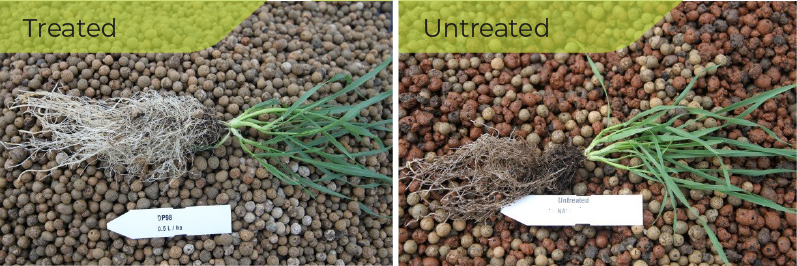Spring Cereals Struggling?
The majority of spring cereals have been drilled into fairly ideal seedbeds, however, with continued dry weather, many crops (and some winter crops) are only moving slowly and are potentially struggling in the drying surface. Most medium and heavy soils have moisture at depth so how can crops be helped to get roots to the moisture?
3rd Party Trials
Trials conducted by Nottingham University have showed an average increase in root mass of 38% when OMEX phosphite product Kickstart (DP98) was applied, compared to untreated plants. With the days from drilling to harvest reducing it is vital that there is a significant root mass to allow the plants to maximise yield potential. A larger root mass increases the plants ability to uptake nutrition and water.
 Phosphite white paper April 2020
Phosphite white paper April 2020
 Phosphite white paper April 2020
Phosphite white paper April 2020
A white paper just published by the School of Biosciences, Nottingham University based on BBSRC-LINK funded work has concluded:
- Foliar application of phosphite enhances root biomass by an average of 30%
- Effects are more pronounced when water supply is restricted
- Phosphite treatment enhances root system architecture (as revealed by X-ray CT imaging)
- Foliar application of phosphite typically improves leaf water use efficiency
